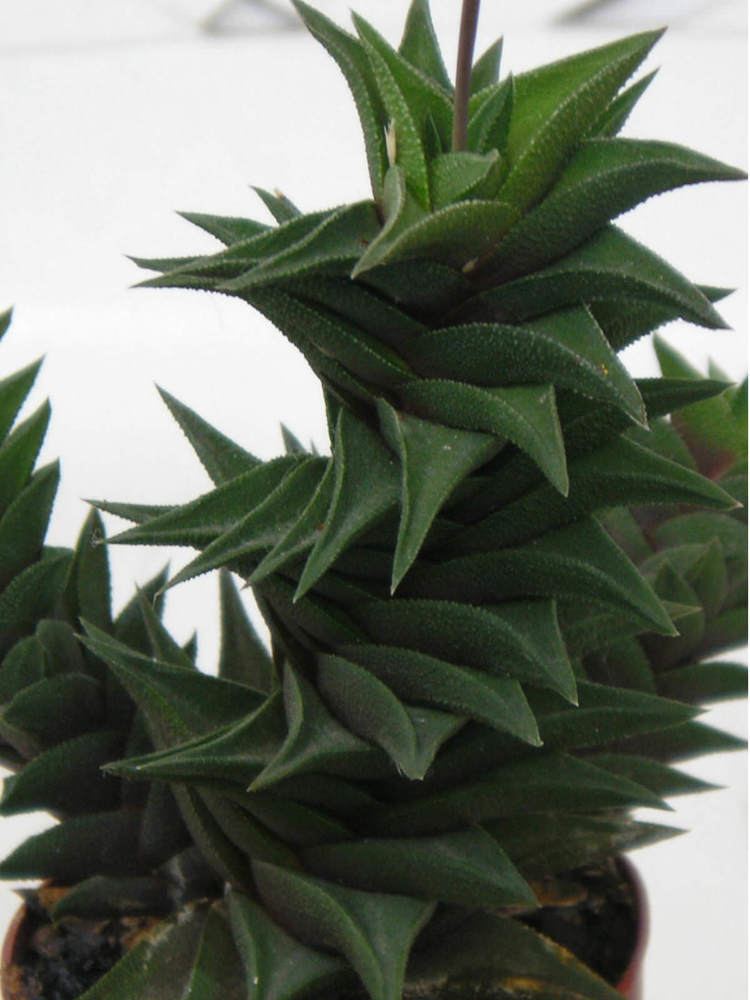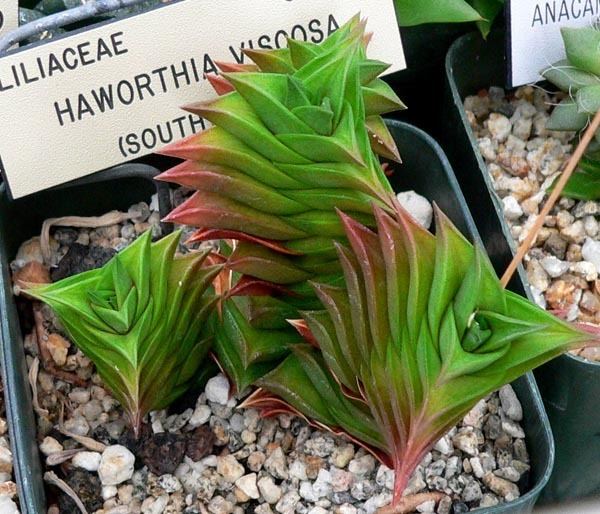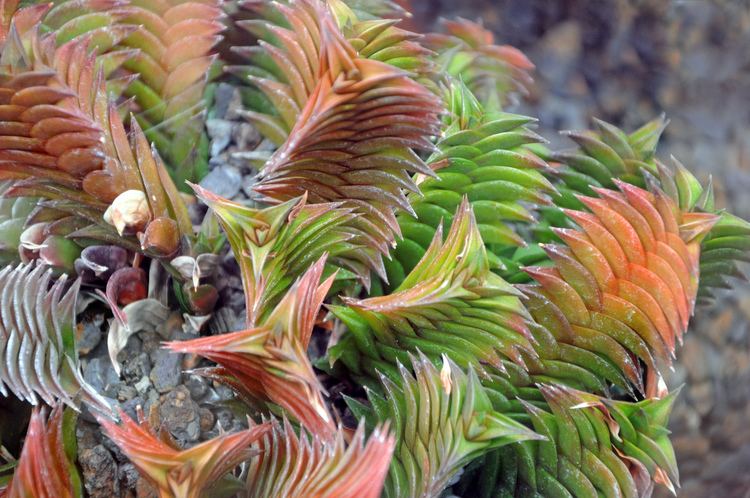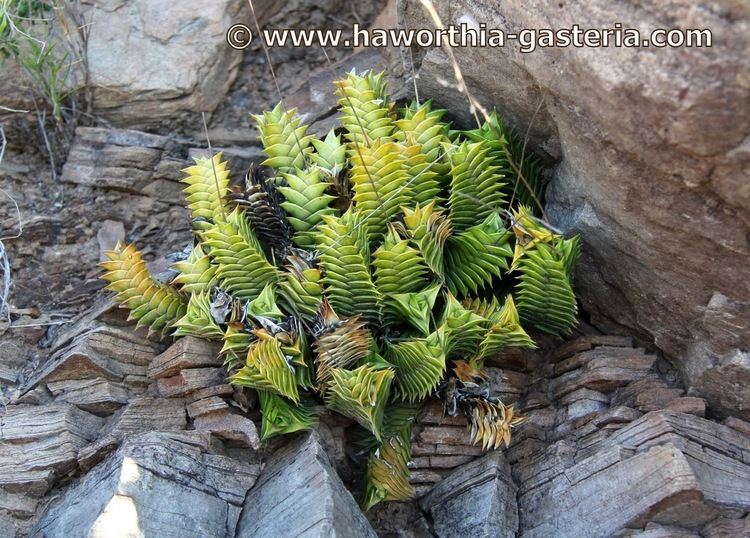Kingdom Plantae Clade Monocots Family Asphodelaceae Rank Species | Clade Angiosperms Order Asparagales Subfamily Asphodeloideae | |
 | ||
Similar Haworthia limifolia, Haworthia reinwardtii, Haworthia nigra, Haworthia retusa, Haworthia attenuata | ||
Haworthia viscosa is a species of flowering succulent plant from the Western and Eastern Cape Provinces, South Africa.
Contents
Description

H. viscosa typically grows its sharp succulent leaves in three tiers or columns ("trifarious" leaf arrangement). The pointed leaves are scabrous ("viscosa" means "sticky") and packed densely along its stems.

The plant offsets from its base and can eventually form large clumps. In the wild, it often shows damage from grazing animals, as it is a common food source.
The flowers appear from October to November.
Varieties

This is a relatively variable species, and several regional varieties are recognised. H. beanii and H. tauteae are possible variants. H. viscosa var. variabilis is a variety with variable leaf-length, from the far south of the species' natural range, north-east of Joubertina.
Taxonomy

Within the genus Haworthia, the species forms part of the subgenus Hexangulares. More specifically, it falls within section Trifariae ("Three-tiered") together with its close relative Haworthia nigra (and its other relatives Haworthia sordida, Haworthia scabra and Haworthia starkiana).
Recent phylogenetic studies have demonstrated that subgenus Hexangulares is actually relatively unrelated to other Haworthias (being more closely related to Gasterias. It will therefore comprise a new, separate genus, Haworthiopsis, and this species will accordingly become "Haworthiopsis viscosus".
This species readily hybridises with other species of Haworthia, as well as with species of Astroloba and other related genera.
Distribution
This species extends across the southern part of the former Cape Province of South Africa. Its range stretches on both sides of the border between the Western Cape and Eastern Cape Provinces, encompassing the Little Karoo and the southern verges of the Great Karoo. It is also found in the Gamtoos Valley.
Within this range, it typically grows in very well-drained sandy soil, either in full sun, or under a bush or rocky crevice which serves as partial protection from the sun.
